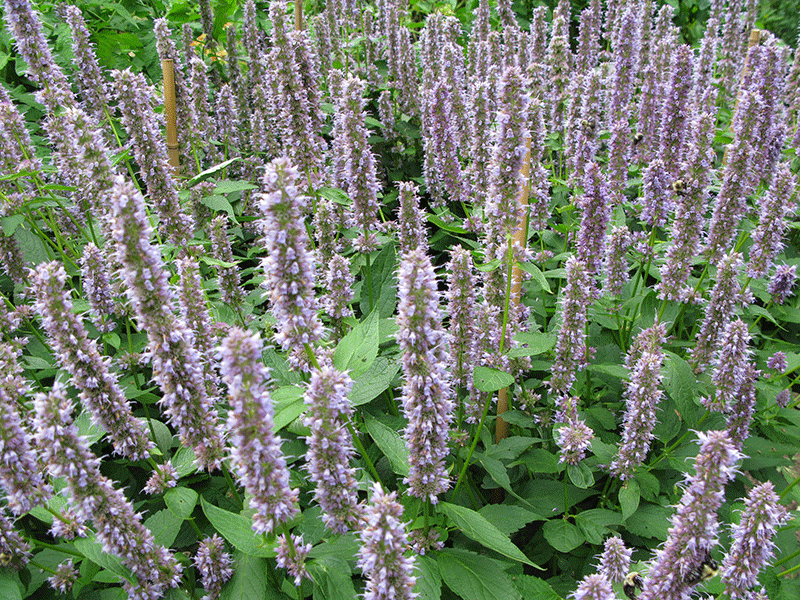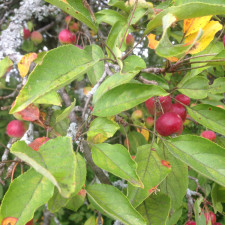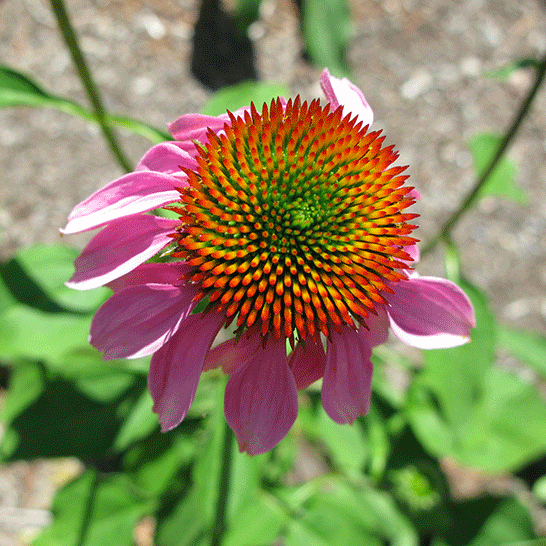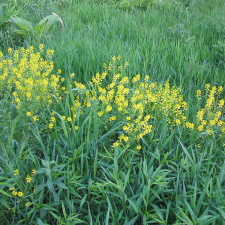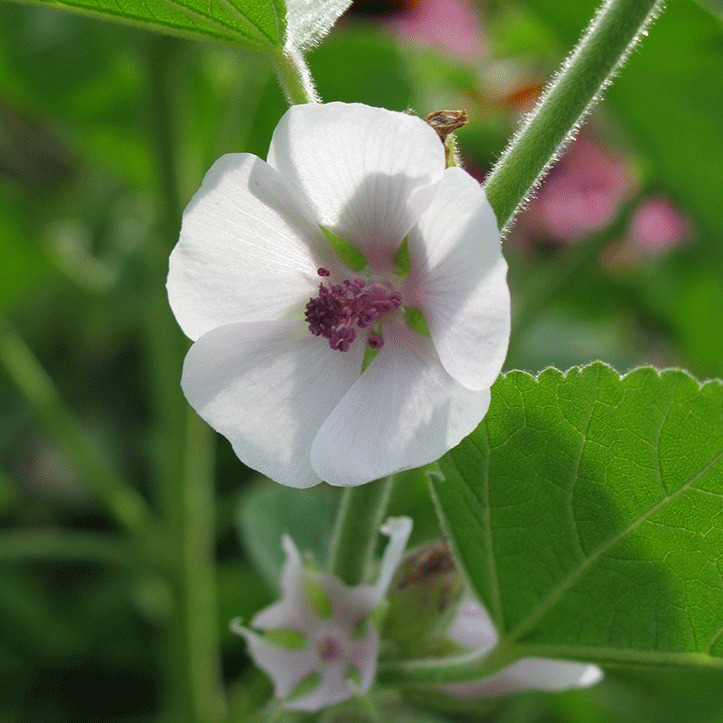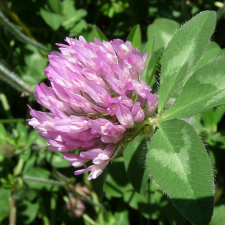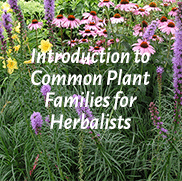Eight Herbal Plant Families
I’ve been teaching a plant families supplement to the Herbal Apprenticeship at the Boston School of Herbal Studies as a framework for learning herbs. Here I’ll share the top eight families I always teach. There are well over 50 common families we use for food and medicine; this is a start with the most commonly represented families in New England.
Lamiaceae – The Mint Family
Let’s start with one of the most important plant families on earth and the family that holds many many of our most used kitchen herbs – worldwide there are over 3500 species with approximately 50 genera found in North America. These are carminative, cooling nervines via gentle stimulation. Very safe to sample, but some are poisonous if eaten en masse. If edible (most are), then all parts are edible, and some species are a great source for edible flowers.
This family is rich in volatile oils, especially menthol (think of cough drops and vapo-rub); spicy oils are stimulating and warming, causing the body to open up and sweat; so most of these plants are diaphoretic. Volatile oils are also highly lethal to microorganisms. This active stimulation also aids digestion and soothes stomachaches, which is why it is the family of nearly all the most common kitchen herbs: Thyme, Rosemary, Sage, Mint, and Oregano.
Look for these Mint family patterns:
- square stem (roll between fingers) – some non-mints have square stems (in the Loosestrife, Verbena and Stinging Nettle families, but none of them smell minty), not all mints have square stems (Thymus)
- characteristic aroma (bring beneficial insects to the garden while repelling pests) (Coleus does not have an aroma)
- opposite leaves that alternate direction, leaves are pointed with edge serrations
- tubular, ‘irregular’ flowers bees love, with four stamens, with two long two short, a united corolla with two lobes up and three lobes down, clustered together in whorls, either in terminal spikes (spikes at the end of the stems) or in the leaf axils, but rarely both. Once the flowers have faded, the seed producing ovary is divided into four conspicuous nutlets.
- volunteer readily and often grow wild
Common plants
- Ground Ivy – Glechoma hederacea (Stephen Buhner cites this plant as able to remove heavy metals)
- Spearmint – Mentha spicata
- Peppermint – Mentha peperita
- Lemonbalm – Melissa officinalis (limonene – cooling essential oil for excited heat state) (also high in flavonoids)
- Chocolate mint – and all the hybridized mints – Mentha spp.
- Dead Nettle – Lamium
- Ajuga – Ajuga reptans
- Betony – Stachys officinalis
- Anise Hyssop – Agastache foeniculum
- Blue Vervain – Verbena hastata
- Beebalm – Monarda spp. – Monarda fistulosa is for dry atrophy tissue state, stims gall baldder and lubricates colon
- Lamb’s Ears – Stachys byzantina
- All-Heal – Prunella vulgaris
- Horehound – Marrubium vulgare
- Scullcap – Scutellaria spp.
- Basil – Ocimum basilicum
- Oregano – Origanum vulgare
- Marjoram – Origanum majorana
- Rosemary – Rosmarinus officinalis (volatile or essential oil stimulant)
- Lavender – Lavandula spp.
- Thyme – Thymus vulgaris (volatile or essential oil stimulant)
- Sage – Salvia spp.
- Catmint – Nepeta cataria
- Mountain Mints – Pycnanthemum spp.
- Hemp Nettle – Galeopsis bifida (poisonous, from Europe, a weed in my garden)
Surprising woody members:
- Vitex
- Teak
Rosaceae – The Rose Family
Another of the most important plant families we use for food; many of our most eaten fruits, including apples, peaches, raspberries, blackberries, almonds and cherries belong to this family. Typically very safe, the seeds of some species have cyanide, which is poisonous (usually not ingested in high enough quantities to be fatal). Yet this family is soothing and cooling due to the cyanide, which cools by slowing down the Krebs cycle. Cyanogenic glycosides give rise to the bitter almond flavor. Flowers are edible. Triterpine saponins are other potentially toxic compounds; Agrimony and Tea roses can cause contact dermatitis.
Look for these patterns of the Rose family:
- 5 sepals, 5 petals
- numerous stamens, numerous styles (distinctive, fuzzy-looking center)
- serrated leaf, palmate leaf or one leaf consisting of several leaflets, leaves with stipules are common (buttercups do not have leaf stipules)
- many different fruits – fleshy to false fruits – distinctive slightly domed receptacle underneath (inferior ovary)
Common plants:
- Rose – Rosa spp.
- Hawthorne – Crataegus
- Raspberry – Rubus
- Cinquefoil – Potentilla
- Meadowsweet – Spiraea
(next four are called out by Matthew wood as key aids for the excited heat state due to cyanide)
- Almond – Prunus (Prunus host many butterfly species)
- Peach – Prunus
- Wild Cherry – Prunus
- Apple – Malus
Other cooling remedies in the Rose Family for the heated tissue state:
- Rose hips
- Hawthorne
- Wild Cherry
- Peach
Alliaceae – The Onion Family
Many plants of this family are readily available, commonly eaten, and inexpensive. These qualities, combined with their antibacterial action, make them a great initial frontline against colds and flu around the globe. Allium family plants have sulfur-containing compounds like alliin andallicin, which are bactericidal antibiotics and reduce hypertension, arteriosclerosis, and stroke. These sulfur-containing compounds are critical in powering the Krebs cycle and can be eaten daily.
Look for these patterns of the Allium family:
- Often with bulb at base, surrounded by dry leaves
- Onion-like smell
- Simple, narrow leaves in basal rosette
- Inflorescence a terminal umbel (rounded, globe-like), sometimes with bulblets
- Tepals 6, anthers 6
- Ovary superior, 3-carpellate
- Fruit a capsule
- Seeds hard, dark
Common plants:
- Garlic – Allium sativum
- Ornamental onions – Allium spp.
Asteraceae – The Sunflower Family
The largest family of flowering plants other than Orchids, which are mostly tropical, with over 2,500 species in the U.S. and Canada. Many species are cultivated as ornamentals, including Marigold, Chrysanthemum, Calendula, and Zinnia. Surprisingly few are cultivated as food plants other than lettuce, artichoke, endive, plus the seeds and oil of the sunflower.
Perennial plants in this family store carbohydrates as polyfructanes, called inulin, instead of polysaccharides. Preparations of malted coffee substitutes from Chicory roots are making use of inulin; some people have a gastrointestinal reaction to undercooked tubers of Jerusalem artichokes due to the inulin. Inulin is found in the milky ‘latex’ fluid that exudes when a stem is broken and squeezed. The family also has sesquiterpene lactones which are responsible for the effects of feverfew and arnica and are being researched for their possible anti-cancer effects. Some people have contact allergies to the s. lactones.
The Sunflower family is so huge it has sub-families, with attendant sub-tribes:
The Dandelion (Lactocoideae) subfamily includes a variety of plants with dandelion-like flowers. The ray flowers typically over-lap all the way to the center. The petals have strap-like, parallel edges with squared-off ends. The stems and leaves of all species have milky juice, and all are edible, but bitter. Bitter substances like dandelion greens are helpful as an appetizer to stimulate digestive secretions before the main meal. Eating your dandelions can help reduce problems with indigestion later. Many other poisonous plants have milky juice and are not related to Dandelions, check the blossoms for proof.
The Aster subfamily is much larger, made up of eleven tribes, some of them radically different from the others. Thistles and knapweed (Centaurea) are found in the Artichoke tribe.
The Chamomile tribe includes the most aromatic members of the Aster family, such as yarrow, tansy, and chamomile. There is a common pattern to the smell that is undeniably sage-like.
The Sunflower tribe can be tested by smell as well: most species are resinous, much like pines, useful medicinally for their expectorant properties. It is possible to learn to identify many new plants with just your nose.
Look for these patterns of the Aster Family:
- typical disk flower (a composite flowerhead of many flat petals arranged around a round center – which is itself a composite of many small flowers)
- stigmas peeking above the disk center (dandelion curls)
- 5 stamens fused around pistil
- 5 petals fused together
- pappus har (sepals)
- ovary below (thickened area below flowers)
- multiple layers of bracts common
- Each seed is produced by a single tiny flower (‘petals’ are individual flowers)
Common plants:
- Calendula – Calendula officinalis (antiseptic)
- Pyrethrum – Tanacetum cinerariifolium (insecticidal monoterpines called pyrethrins)
- Golden Rod – Solidago spp.
- Purple Cone-flower – Echinacea purpurea (antiseptic)
- Yarrow – Achillea millefolium (also high in flavonoids, used for excited heat like bleeding; cooling stimulant like lemonbalm)
- Boneset – Eupatorium perfoliatum
- Joe-Pye Weed/Gravelroot – Eutrochium purpureum/maculatum
- Bull thistle – Cirsium vulgare
- Fleabane – Erigeron spp.
- Dandelion – Taraxacum officinale
- Lettuce – Lactuca spp.
- Chamomile – Matricaria maritima
- Alpine Arnica – Arnica angustifolia
- Arnica – Arnica montana
- Cnicus – Cnicus benedictus
- Artichoke – Cynara scolymus
- Coltsfoot – Tussilago farfara (pyrrolizidine alkaloides)
- Stevia – Stevia rebaudiana (diterpenes like glycoside steviosal – very sweet)
- Narrow-leaved Purple Coneflower – Echinacea angustifolia (antiseptic)
- Common Chicory – Cichorium intybus
- Pearly Everlasting – Anaphalis margaritacea
- Pussytoes – Antennaria spp.
- Bachelor’s Buttons – Centaurea cyanus
- Common Tansy – Tanacetum vulgare
- Oxeye Daisy – Leucanthemum vulgare AKA Chrysanthemum leucanthemum
- Dotted Gayfeather – Liatris punctata
- Wild Sunflower – Helianthus annuus
- Blackeyed Susan – Rudbeckia hirta
- Beggars Ticks – Bidens spp.
- Blanket flower – Gaillardia aristata
- Asters – Aster spp.
- Big Sagebrush – Artemisia tridentata (species have strong aromas and bitter tastes from terpenoids and sesquiterpene lactones, which discourage herbivory)
- Sweet Annie – Artemesia anuua (see note above and below)
- Elecampane – Inula helenium (contain bitter terpenoids that are fragrant and are usually vermifuges/parasiticide)
Brassicaeae or Cruciferae – The Mustard Family
Most members of the Mustard family are weedy species with short lifecycles like the radish, sprouting quickly and growing fast. Look for them in disturbed soils such as a garden or construction site, where the ground is exposed to rapid drying by the sun and wind. They set seed early in the season before all moisture is lost from the ground. Crucifers are rich in glucosinolates, sulfur-containing compounds that impart a pungent aroman and spicy or bitter taste. Sulphuric compounds are antibiotic and antiviral and aid the body in detoxification. Researchers are looking into these compounds as cancer preventatives.
Look for these patterns of the Mustard family:
- 4 petals (X or H) and 6 stamens, 4 tall and 2 short
- Mustard flowers, then seed pods always occur on the plant in a radial pattern around the stalk, in a raceme.
- Seed pods split open from both sides to expose a clear membrane in the middle – ‘silique’
- All edible
Common plants:
- Cabbages, Broccoli, radish, turnip
Six of our common vegetables–cabbage, cauliflower, kohlrabi, Brussels sprouts, broccoli, and kale–were all bred from a single species of mustard, Brassica oleracea. Plant breeders developed the starch-storage abilities of different parts of the plant to come up with each unique vegetable. Commercial mustard is usually made from the seeds of the black mustard (B. nigra) mixed with vinegar.
- American Wintercress – Barbarea orthoceras
- Garlic Mustard – Alliaria petiolata
- Sweet rocket – Hesperis matronalis
- Watercress – Nasturtium officinale
- Rock cress – Arabis spp.
- Black Mustard Seed – Brassica nigra (rubefacient)
- Horseradish – Armoacia rusticana (bitter)
Malvaceae – The Marshmallow Family
Malvaceae family plants contain gums called mucilage, pectin, and asparagin, which gives them a slimy texture when crushed. The mucilaginous quality of the Mallows may be used just like the unrelated Aloe vera: externally as an emollient for soothing sunburns and other inflamed skin conditions, or internally as a demulcent or expectorant for soothing sore throats. Marshmellow is the top herb for the dry atrophy tissue state – coats and soothes mucosa, increasing mucus secretions.
Look for these patterns of the Mallow Family:
- 5 separate petals and a column of stamens (multiple fused together)
- bracts at base of petals
- mucilage
- pod-type seed head
Common plants:
- Cotton – Gossypium hirsutum
- Hollyhocks – Alcea rosea
- Linden – Tilia spp. (if flowers are too old, narcotic. Gather when in bud. Cooling and moistening, hypotensive, relaxing nervine, relaxing diaphoretic, demulcent, astringent, anti-spasmodic, mild diuretic)
- Okra – Abelmoschus esculentus
- Marshmellow – Althea (‘Althea’ means ‘healing’)
- Swamp Rose Mallow – Hibiscus moschuetos (Hibiscus are all high in flavonoids)
Fabaceae – The Bean Family
Rich in polyphenols such as flavonoids and tannins, seeds have lectin, which are sugar-binding proteins that stick to red blood cells. Coumarins are a constituent prized in the clover tribe. Actions in this family are more varied, including anticoagulant properties in some plants. All Bean family plants are symbiotic with soil bacteria, and help enrich the soil with nitrogen, fixed from the air and stored in root nodules. Plants in this family are not all edible, some are poisonous in small amounts.
Look for these patterns of the Bean family:
- pinnate leaf with terminal leaf as tendril
- 5 sepals basally united
- corolla 5 petals with butterfly shape and lower 2 fused to form keel structure, larges petal showy above
- 9-10 stamens in tubular structure
- fruit a pod
Common plants:
- Licorice – Glycerrhiza glabra (high in triterpenoid glyceyrrhiz glabra)
- Scotch Broom – Cytisus scoparius
- Sweet Clover – Melilotus officinalis (Warfarin, the dicoumerine-based anti-coagulant was made from Sweet Clover)
Apiaceae – The Carrot Family
Characteristic umbel flower structure and often tap-root, rich in essential oils. Plants in this family are not all edible, MANY are poisonous in small amounts.
Look for these patterns of the Carrot family:
- umbel flower structure
- furrowed stem, hollow internodes
- leaves sheathed at base, divided
Common plants:
- Caraway – Carum carvi
- Coriander – Coriandrum sativum
- Fennel – Foeniculum vulgare
- Lovage – Levisticum officinale
- Anise – Pimpinella anisum

